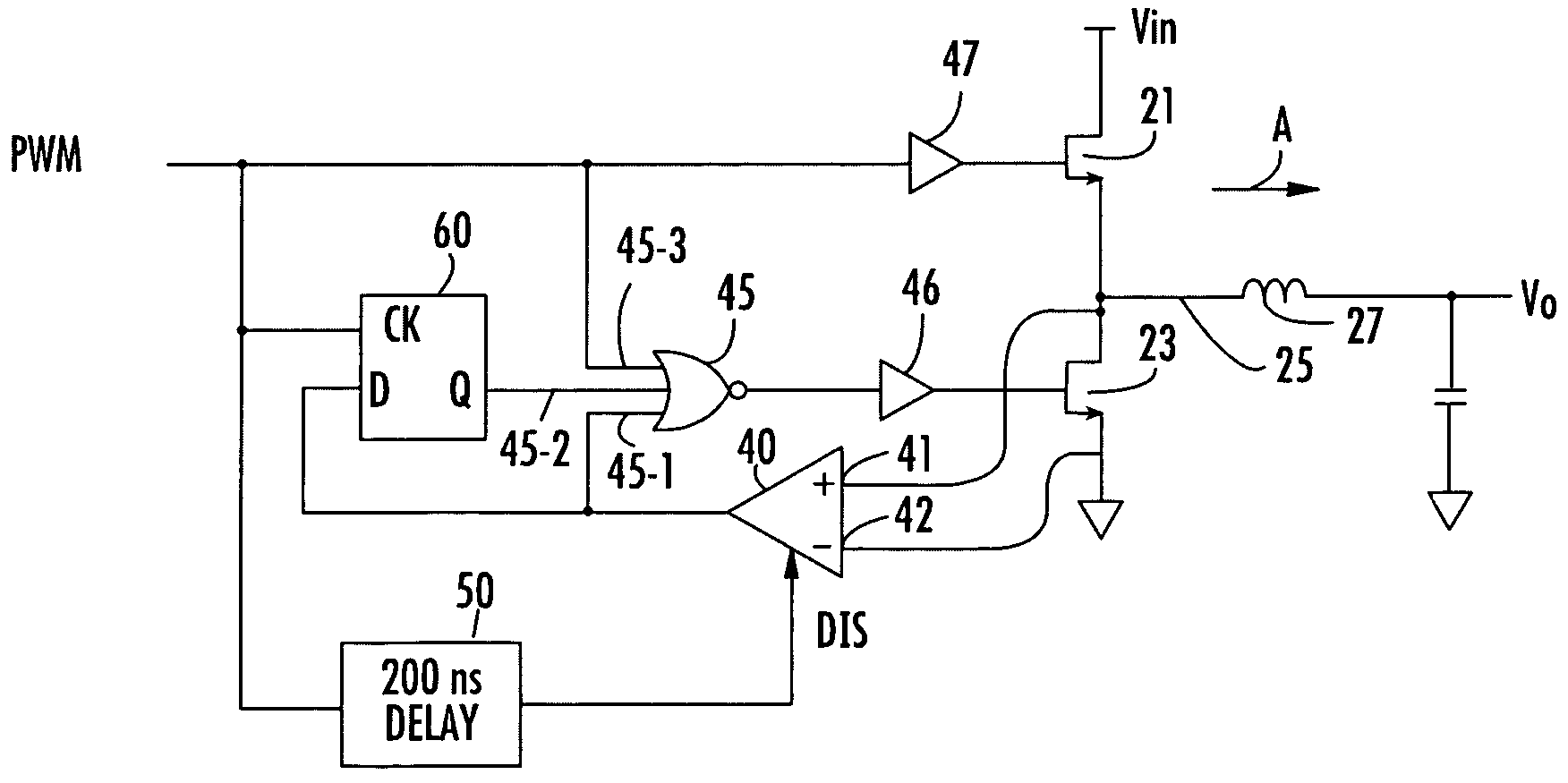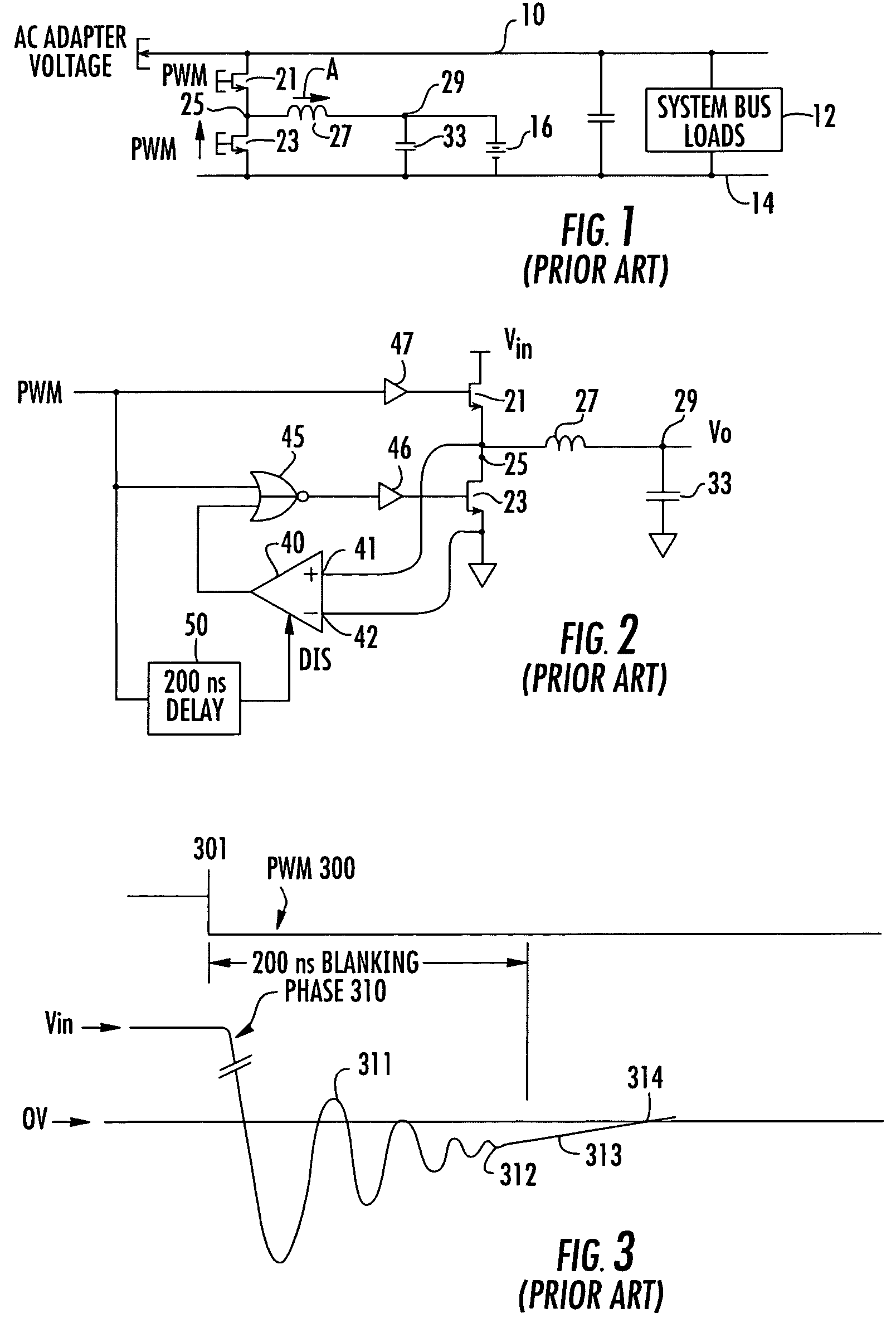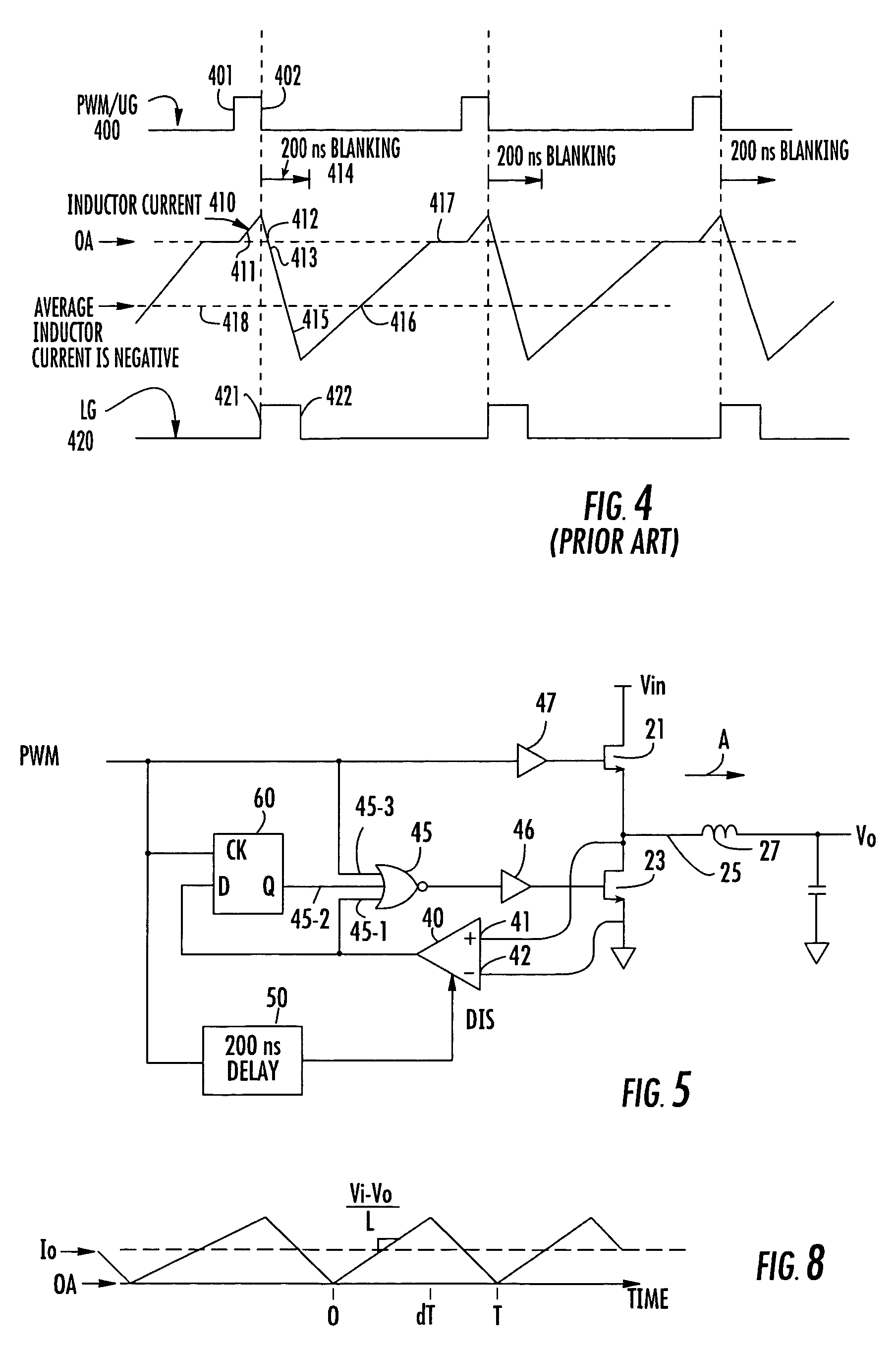Method and apparatus for preventing boosting system bus when charging a battery
a technology of a system bus and a charging device, which is applied in the direction of electric variable regulation, process and machine control, instruments, etc., can solve the problems of boosting system bus voltage to unsafe levels, downstream system components, and phase comparator triggers on ringing edges rather than on true zero-crossing ramps, so as to prevent boosting system bus voltage
- Summary
- Abstract
- Description
- Claims
- Application Information
AI Technical Summary
Benefits of technology
Problems solved by technology
Method used
Image
Examples
Embodiment Construction
[0027]Attention is now directed to FIG. 5, which shows a modification of the buck mode DC-DC converter circuit of FIG. 2 in accordance with an embodiment of the present invention, to include a memory element that is used to selectively latch the output of the phase detector and thereby control the switching of the operation of the converter between synchronous buck mode and standard buck mode operation, in a manner that is effective to prevent boosting the voltage of the system bus. In particular, FIG. 5 shows the addition of a D-type flip-flop 60 having its D input coupled to the output of the phase comparator 40, its clock input CK coupled to receive the PWM waveform, and its Q output coupled as an additional input to NOR gate 45. As will be described below, the state of the Q output of flip-flop 60 determines whether the converter is to operate in synchronous buck mode or standard buck mode.
[0028]When operating in standard buck mode, LFET 23 is held off, so that only its body dio...
PUM
 Login to View More
Login to View More Abstract
Description
Claims
Application Information
 Login to View More
Login to View More - R&D
- Intellectual Property
- Life Sciences
- Materials
- Tech Scout
- Unparalleled Data Quality
- Higher Quality Content
- 60% Fewer Hallucinations
Browse by: Latest US Patents, China's latest patents, Technical Efficacy Thesaurus, Application Domain, Technology Topic, Popular Technical Reports.
© 2025 PatSnap. All rights reserved.Legal|Privacy policy|Modern Slavery Act Transparency Statement|Sitemap|About US| Contact US: help@patsnap.com



